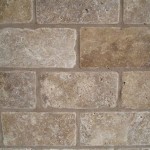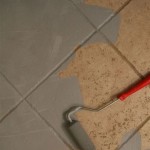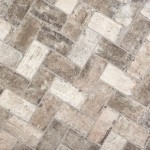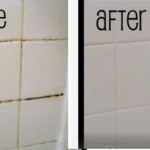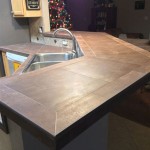How To Install Ceramic Wall Tile In Kitchen
Installing ceramic wall tile in a kitchen can significantly enhance its aesthetic appeal and durability. Ceramic tiles offer a wide range of colors, patterns, and finishes, allowing for customization to match any kitchen design. This guide will provide a comprehensive step-by-step process for installing ceramic wall tile, ensuring a professional-looking finish.
1. Preparation and Planning
Before starting the installation, thorough preparation is crucial. This involves clearing the area, removing existing wall coverings, and ensuring the wall surface is suitable for tiling.
The first step is to clear the area where the tile will be installed. This includes removing any cabinets, appliances, or fixtures that might obstruct the work. Next, remove any existing wall coverings, such as wallpaper or paint, to expose the bare wall. The old material should be removed completely to ensure proper adhesion of the tile.
Once the wall is bare, it's essential to assess its suitability for tile installation. Examine the wall for any cracks, holes, or uneven surfaces. These imperfections should be repaired using joint compound or spackling paste. Allow the repairs to dry completely before proceeding.
After the repairs are dry, the wall surface should be cleaned thoroughly to remove dust, debris, or any residues that might interfere with the tile adhesive. Use a damp cloth and a mild detergent to clean the wall, ensuring it's dry before applying the adhesive.
2. Setting Up the Tile Layout
Prior to installing the tiles, it's important to create a layout plan to ensure a visually appealing and efficient installation. This involves determining the starting point, the tile arrangement, and any necessary cuts.
The starting point for the tile layout can be determined by considering the most visible area of the wall. Ideally, start from a central point or a corner to create a balanced look. The tile arrangement should be planned to minimize the need for cutting tiles, especially in the corners and along the edges.
To ensure a consistent and symmetrical arrangement, use a level and a pencil to mark the tile layout on the wall. This will guide the placement of the tiles throughout the installation process. Consider any features like windows, doors, or cabinets that might require adjustments to the layout.
Once the layout is planned, use a tile cutter or a wet saw to pre-cut tiles that need to fit around corners, pipes, or other obstacles. This will ensure a clean and precise fit during installation.
3. Installing the Tiles
Once the preparation and layout are complete, the installation of the tiles can begin. This involves applying tile adhesive, positioning the tiles, and ensuring proper alignment and leveling.
Start by applying a thin layer of tile adhesive to the wall surface using a notched trowel. The size of the notches on the trowel should correspond to the recommended thickness of the tile adhesive. Spread the adhesive evenly across the area where the first tile will be installed.
Carefully position the first tile on the adhesive, pressing firmly to ensure proper contact. Use a level to check the alignment of the tile and adjust it accordingly. If necessary, lightly tap the tile with a rubber mallet to ensure it's firmly seated. Repeat this process for each tile, working from the starting point and following the predetermined layout.
As you install the tiles, maintain consistent spacing between them. Use tile spacers to ensure uniform gaps and support the tiles during the drying process. Once the tiles are installed, allow the adhesive to dry completely according to the manufacturer's instructions.
4. Grouting and Finishing
After the adhesive has dried, the next step is to grout the gaps between the tiles to create a smooth and sealed finish.
Using a grout float, apply grout to the gaps between the tiles. Gently press the grout into the gaps to ensure it's filled completely. Once the grout is applied, use a damp sponge to wipe away any excess grout and clean the surface of the tiles.
After the grout has dried, use a grout sealer to protect the grout from stains and moisture. This will help maintain the appearance and longevity of the tile installation.
Once the grout is dry, allow the sealant to cure before applying any caulk around the edges of the tile installation. This will create a waterproof and durable finish, preventing water damage and ensuring a long-lasting installation.

Top Five Mistakes To Avoid When Installing Kitchen Wall Tiles Tile Mountain

How To Tile A Kitchen

How To Install Ceramic Wall Tile 13 Steps With Pictures

How Tile A Backsplash Choosing And Installing The Rubi Blog Usa

How To Tile A Backsplash Tutorial For Beginners

How To Install A Backsplash In Your Kitchen Budget Dumpster

How To Install Ceramic Wall Tile 13 Steps With Pictures

How To Install Ceramic Wall Tiles Barana

How To Install Ceramic Wall Tile Kitchen Infinity

How To Install Ceramic Wall Tiles Barana
Related Posts


